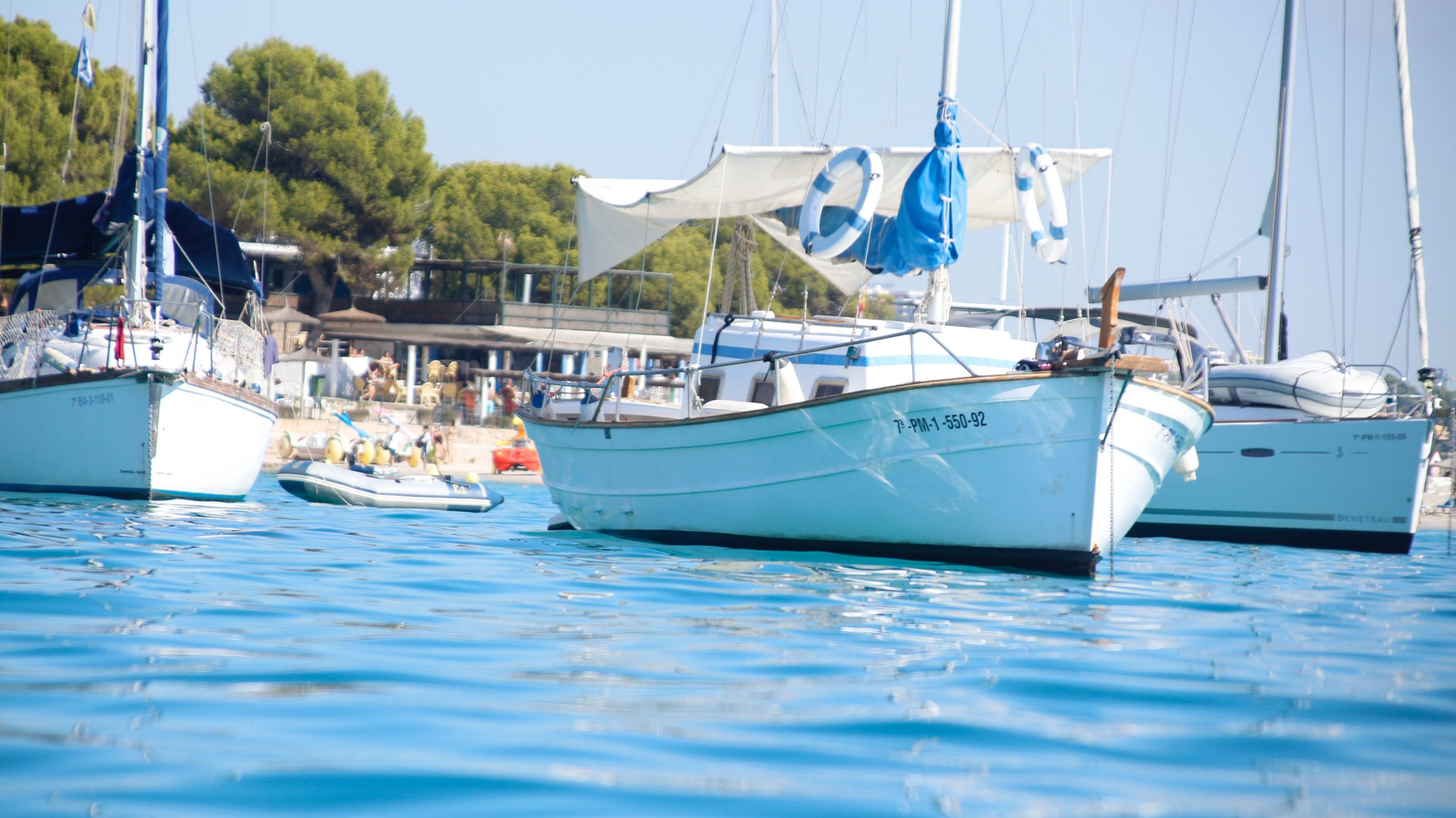What’s the ideal boat for solo sailing? The answers to this question are as diverse as the lone sailors who take on the adventure of the open sea..
If you ask the famous French sailor Francois Gabart, the answer would be a massive 100 foot trimaran, a multimillion dollar speed demon capable of sailing around the world in a record breaking 42 days. His ideal boat is huge, lightweight and capable of carrying enough sail area to move faster through the water than many people like to drive on the highway.
Others choose a more conservative approach, like Sven Yrvind, the famous Sweish solo sailor who has slowly but surely plodded his way across the oceans aboard vessels ranging in size from fourteen to twenty feet in length. His ideal boat is small enough to travel up small creeks with only a small sculling oar to propel her, with barely enough room inside the cabin to sit upright, and sails that have less square footage than most people’s bedsheets.
Most solo sailors aim for somewhere in the middle, choosing a boat that is small enough for one person to handle themselves, yet carries enough sail area to complete passages at respectable speeds.
In this article, the second of our three part series on solo sailing, we will explore how to choose the ideal sailboat for solo sailing. We will cover hull design considerations, cabin space and layout, sailing rig configurations, size, and various other important factors when choosing the right boat for single handed sailing.
If you have ever considered taking off on a solo sailing voyage but don’t know what type of boat is best for you, then keep reading.
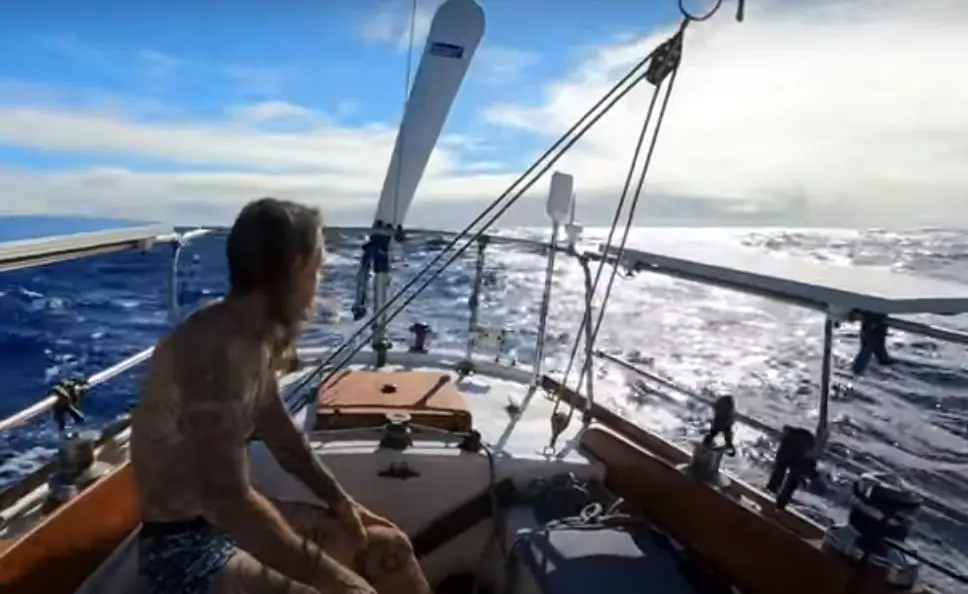
How to Pick the Best Boat for Solo Sailing
Designs for good solo oceangoing boats vary wildly, but they all have a few things in common. All decent offshore boats have a seaworthy design – that means the shape of the hull can handle large swells and good sized waves without extremely uncomfortable motion or moving unpredictably. For example, some vessels that are fun and fast on a Sunday afternoon race around the buoys would roll wildly in large swells, or even broach down the side of a wave and risk the possibility of capsizing or pitchpoling (when the boat turns upside down so that the keel is in the air, or the bow digs into a steep wave, causing the stern to flip over the bow, respectively).
When considering the seaworthiness of a boat’s hull, it’s important to consider factors like the size, weight and shape of the keel, the beam, displacement, windage of the hull and cabin top, and of course the shape of the hull itself. Each design feature has its own advantages, but also requires another compromise. For example, boats with a round shaped hull tend to roll badly when sailing downwind, while boats with a flat bottom can be prone to pounding while beating into the wind. Boats with a fin keel tend to point better into the wind, but they usually have a deeper draft than full keel boats, and they offer less protection for the rudder, making it more likely to suffer damage to your steering system.
Equally important as the hull shape and seaworthiness is the strength of the vessel itself. Any boat venturing beyond the sight of land needs to be able to survive a serious storm without suffering serious damage or taking on too much water. The hull, deck and cabin top all need to be solid enough to withstand the force of breaking seas, and all the portholes must also be able to hold up to a beating from the sea.
A good visual for the kind of strength needed for blue water sailing is to imagine how the boat would react to being pounded full force with a sledgehammer. If it can hold up to that, then chances are good it can take on the open ocean. This may sound like overkill, but it’s not. Only someone who has direct experience with the force of a breaking wave can truly understand the kind of damage that the ocean is capable of inflicting on boats.
You can build an ocean worthy vessel out of fiberglass, carbon fiber, wood, steel, aluminum or even ferrocement, as long as they are professionally constructed and properly maintained. Each material has their advantages and disadvantages, and every sailor has their own preference. I have sailed fine vessels built from all types of materials, but if given an unlimited budget, I would probably build my ideal solo cruising sailboat from carbon fiber with enough floatation to have positive buoyancy.
Some people believe that it’s necessary for a boat to be heavy in order for her to be seaworthy for offshore sailing conditions, but this isn’t always the case. While it’s true that most older lightly constructed boats are best kept close to shore, modern yacht design and new lightweight but strong building materials have made it possible to construct vessels that are both lightweight, fast, and strong enough to take on the worst that the ocean can throw at her.
IMOCA 60’s, for example, (the 60 foot race boats that are built for the Vendee Globe race) are designed to be pushed hard through the Southern Ocean, sometimes sailing at speeds in excess of 30 knots in storm conditions.
Most solo sailors will never sail an IMOCA 60 (nor would they want to handle that kind of sail area), but boat designs like this are a perfect example of vessels that are both light and strong. Sometimes a lighter boat has a much better motion at sea than a heavy one of a similar size, because heavy boats tend to roll and pitch as their weight gets thrown around in large seas, while a lightweight boat can ride over the seas. Light vessels also have the added possibility of incorporating positive buoyancy, where the boat is able to flat even while full of water, a very appealing safety feature for single handers sailing far outside the typical range of rescue operations.
Of course, it’s important to note that most lightweight boats, especially those built before the year 2000, don’t have the same strength as those built today. In the earlier years of fiberglass boatbuilding, strength was obtained by adding layer upon layer of fiberglass, while today, we can get that same strength with much thinner hulls. When looking at older boats, generally heavier construction means a stronger boat.
Another important consideration is the passagemaking ability. Can the boat comfortably sail more than 100 miles per day for weeks on end? Remember that often on passage the sail area will be reduced and there will usually be the effect of confused seas and chop that will slow the boat’s momentum considerably. The speed that you will be able to maintain offshore will likely be much less than while sailing in smooth seas closer to home.
An underrated issue is light air sailing ability. It’s extremely important for your boat to be able to survive a storm intact, but chances are you will spend much more time trying to coax the boat to keep moving in light airs. Offshore sailors report dealing with winds under 10 knots about a quarter of the time offshore, which means a boat that can keep sailing when the wind drops will get you to port much faster.
Another important consideration is the rig. Solo sailors want sails that are easy and safe to manage alone. For solo sailing, I prefer to have all sails controlled from the cockpit, with a roller furling jib and mainsail if possible. Many traditionalists are wary of roller furling gear, but the simple technology has been proven on thousands of vessels since the 1960’s, and if set up and used correctly should always work when you need it.
Roller furling offers the added benefit of unlimited reefing possibilities, rather than just two or three sets of reef points as is normal with traditional hank on sails. When your sails are quick and easy to reef or unfurl, people tend to take action faster, reducing the chances of getting caught with too much sail out in an unexpected squall.
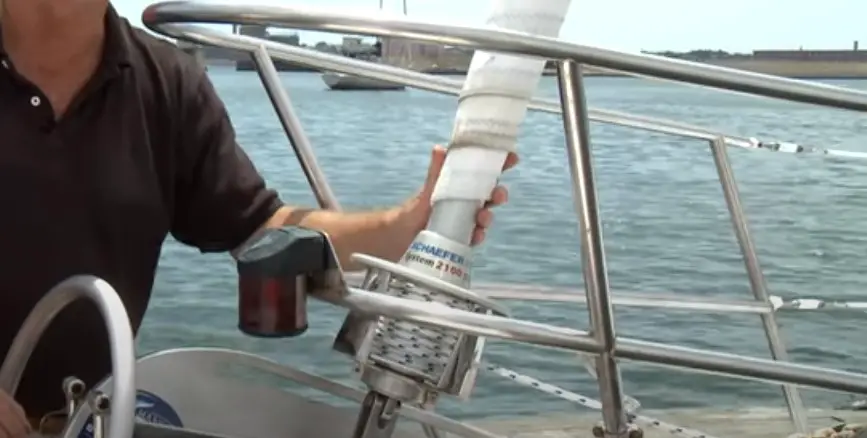
There is nothing worse than spending twenty minutes wrestling with a hank on jib on a wildly moving foredeck, only to have the wind immediately die and having to reverse the process. I have spent many hours on solo deliveries moving between the cockpit, the foredeck and the mast, hoisting and then dropping sails as the wind fluctuates erratically. Sometimes it seems like most of the passage is spent hoisting and lowering different sails. All this could be avoided by simply installing a cheap and reliable roller furling system prior to departure.
Single handers want a safe and secure cockpit from which to steer the boat and manage the rig. Typically, the smaller the cockpit the better. A small cockpit is less likely to make the boat dangerously heavy when filled with water by a breaking wave, and is a more secure place to work when the motion gets bad.
Some solo sailors have gone as far as decking over the cockpit entirely and replacing it with a flush aft deck, which enlarges the space down below and eliminates the danger of it filling with water entirely. After all, there is no need to entertain a boatload of guests while sailing alone. If your vessel does have a large cockpit, it’s more important than ever to make sure it has self-bailing qualities, so that the water quickly drains away if (or when) the boat gets swamped.
Equally important as a secure cockpit is a liveable space down below. Lots of space down below is not really the priority for experienced sailors – a large open interior can actually be dangerous because it means you have farther to fall when the boat crashes down the side of a wave. A good singlehander’s boat has lots of handholds down below, a secure bunk for sleeping on either tack, a galley that is usable at sea, and perhaps most importantly of all, a proper sit down navigation table. Most solo sailors end up spending a large portion of an offshore passage sitting at the navigation table working out the route or keeping an eye on the instruments.
Don’t forget to consider the stowage space down below as well as the water and fuel capacity. You will want to have plenty of provisions, water and fuel to complete passages with extra supplies just in case. For offshore sailing, I would recommend a minimum capacity of 50 gallons of water, including 25 gallons only to be used in an emergency. This should be enough to get you to port safely, even in case of a dismasting or other serious situation.
An excellent bonus is some kind of inside steering station or pilothouse so the boat can be controlled from inside during periods of foul weather. Some boats, like the small but seaworthy Paradox by Matt Layden, have the ability to control the sails from inside. This allows the skipper to stay warm and dry in rough weather conditions, and avoid any chance of falling overboard.
Don’t forget to consider the ventilation setup on your boat, especially if you will be sailing in the tropics. The heat at the equator can be unbearable at times and a few well placed dorade vents can make all the difference in the world. It’s a good idea to install sa couple 12 volt fans to keep the cabin cool when it’s impossible to let fresh air in through the ports.
What’s the Ideal Size Boat for Solo Sailing?
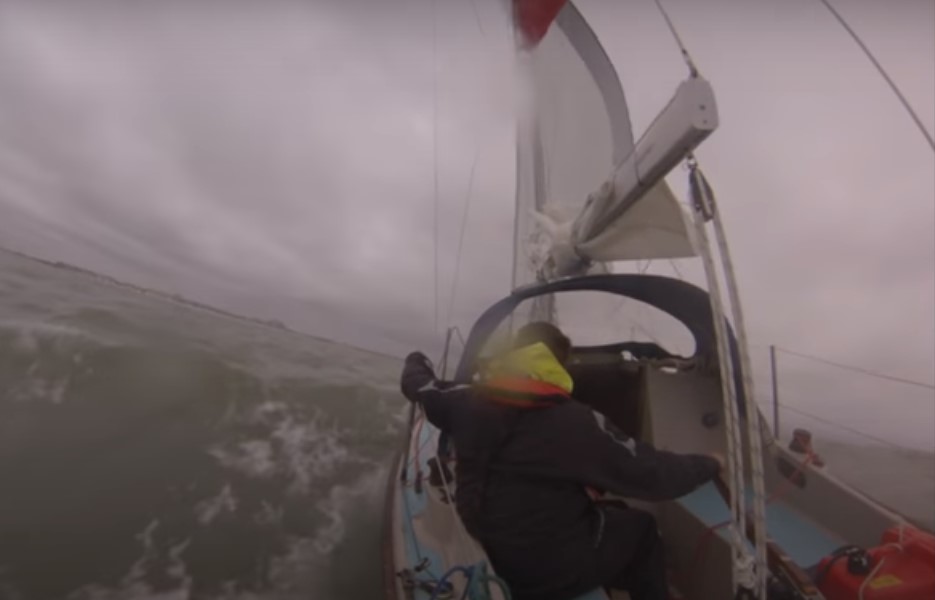
What’s the ideal size vessel for solo sailing? Solo sailors have successfully navigated offshore in boats over 200 feet in length, but most experienced singlehanders choose to keep their ideal vessel under 40 feet long. Boat’s over 40 feet typically have large sails that are much more difficult to handle, and they become extremely expensive to find moorage for and maintain when not at sea.
For me, smaller is better when it comes to singlehanding, down to a point. Smaller boats are easier to maneuver, cheaper to build and maintain, and are often more fun to sail. There is a closeness to the water that you get on a small vessel that is lost on bigger boats. Small boats can also go into tiny coves and up shallow rivers that aren’t accessible to larger boats.
On the other hand, a small boat will generally have a more wild motion in rough seas, and cannot offer the comfort or luxury of a large vessel. Like everything when it comes to boats, choosing the right size vessel requires compromise. Personally, I would recommend choosing a boat under 35 feet long for solo sailing. How much smaller you are willing to go depends on your requirements for comfort and personal space.
Singlehanded Sailing – What Boat Is Right for Me?
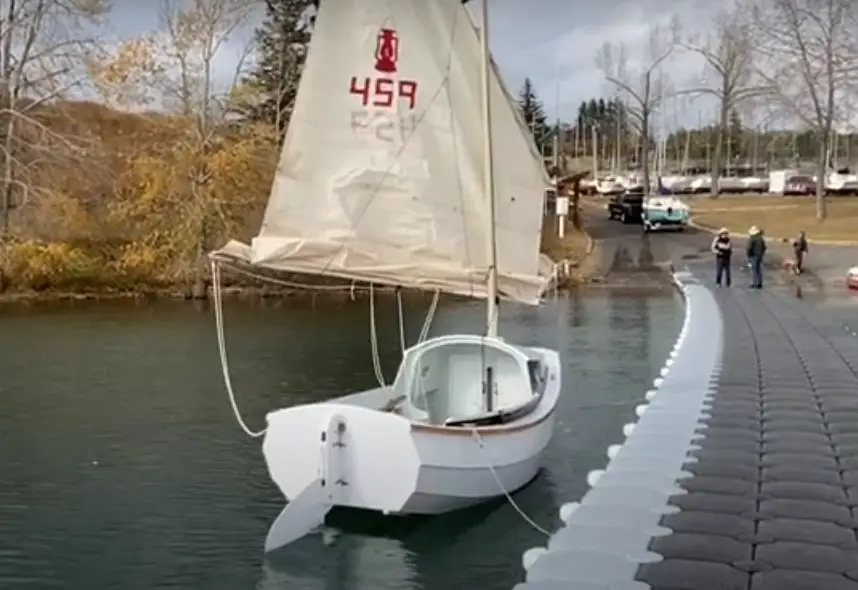
The ideal vessel for solo sailing ultimately depends on the person who will be sailing her. Whatever your personal preferences are, there are thousands of strong, ocean capable vessels readily available on the market.
After completing many different solo passages on a variety of boats, I ended up buying two different boats for different types of solo voyages. The first boat I purchased for solo sailing was my Truant 33, a canoe stern pilothouse sloop built in 1980 that I primarily use around the Pacific Northwest. The Truant 33 makes for an excellent home base in my favorite cruising ground, with plenty of space to live aboard comfortably for months at a time.
My second vessel is a custom designed microcruiser that was built in 2020 specifically to break small vessel ocean crossing records. She was constructed from fiberglass with a foam core, and has just enough room for one person and all of my provisions for a month or two at sea.
The combination of these two vessels meets my solo sailing needs perfectly. When I want to cruise for longer periods of time with all my comforts I sail the Truant, and when I feel the itch to go on an expedition style voyage I can sail the microcruiser.
Ultimately, it’s up to you to decide where you want to sail and what’s the best vessel to sail there. The important thing is to go while the wind is still free and the sea is still empty. Beautiful islands and lonely palm fringed beaches await your shadow – once you have chosen the right boat to get you there!
Every solo sailor needs a reliable source of high quality, up to date information on all aspects of the boating world and there is no better place to find it online than SailAndProp.com. SailAndProp.com is the ultimate source for all your boating information, from picking the best sailmaker to learning new anchoring techniques, and much more. The easiest way to keep up to date is to read our newsletter so don’t forget to subscribe today!

